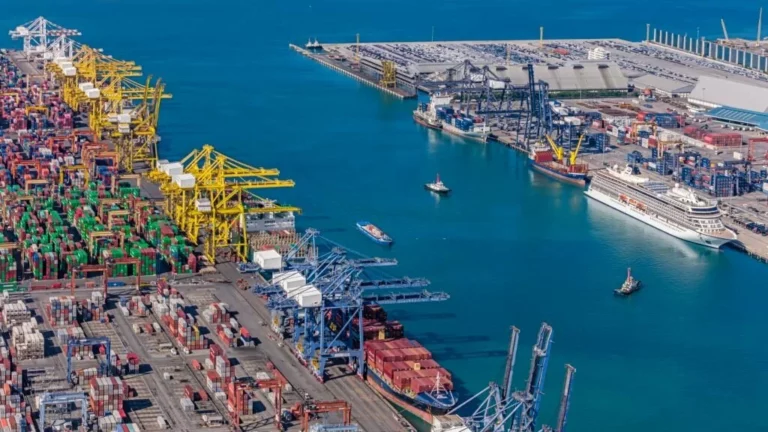Understanding Expedited Shipping
Today’s business environment has become more efficient and faster as a result of the digital revolution. Businesses operate in a world where quick and easy operations are critical, much like people use their smartphones to order takeaway and short, quick content has become a trend. The logistics industry has been significantly impacted by this paradigm change, which has raised customer expectations for accelerated transportation to previously unheard-of levels. Long wait times for delivery are a thing of the past; in the fast-paced market of today, companies must quickly satisfy client needs for order fulfilment.
Expedited shipping has become a key component of logistical plans as businesses try to adapt and survive in a world where success is largely determined by speed, according to the growth of consumer demands. In order to meet the pressing needs of customers and guarantee the timely delivery of goods and services, expedited shipping becomes an essential tool for businesses trying to keep up with the fast-paced nature of modern commerce. Gaining expertise in expedited shipping is not just a competitive advantage in this age of immediate gratification, but also a strategic need for companies trying to hold onto market share in a rapidly evolving industry.
Defining Expedited Shipping in Logistics
As the name implies, expedited shipping places a higher priority on speed than regular delivery techniques. Although the precise meaning may differ slightly throughout carriers, it usually means near-certain or guaranteed delivery timeframes that are faster than those of traditional options. This usually includes delivery that takes one to two days to arrive, although some express options can reach international destinations within a day or two. Although expedited service is more expensive, it has become a necessary component of a successful delivery strategy for clients who are ready to pay more for convenience or for deliveries that must be completed on time.
To streamline these faster air freight processes, many logistics providers rely on best Air Freight solutions, enabling optimised routing, real-time tracking, and seamless connection with other supply chain systems.
Advantages of Expedited Shipping for Supply Chains
Forget about yesterday’s “fast enough”; accelerated shipment is the newest trend revolutionising supply chain management, not just a bonus. Gaining a competitive edge, increasing responsiveness, and optimising your systems are all made possible by realising its significant advantages.
Reducing Lead Times with Expedited Shipping
Instant satisfaction is what clients want in today’s fast-paced environment. Customers expect prompt and effective delivery of their orders, which puts tremendous pressure on companies to streamline their supply chains. In this case, expedited shipment proves to be an effective strategy, cutting lead times considerably and improving operational agility overall. Now let’s examine how it functions:
Faster Delivery alternatives: When compared to normal alternatives, expedited shipping services like overnight or 2-day shipping significantly reduce delivery timeframes. This results in more rapid product deliveries, exceeding client expectations, and cultivating a sense of loyalty.
Streamlined Fulfilment: Companies make sure expedited orders go through the system quickly, reducing delays and bottlenecks, by giving priority to these orders and streamlining the choosing, packaging, and shipping procedures.
Better Inventory Management: Businesses can keep lower inventory levels and lower storage costs and obsolescence risk by knowing that accelerated solutions are available. Their mobility enables them to effectively respond to abrupt spikes in orders and adjust to changing demand.
Dynamic Route Optimisation: Enhanced shipment effectiveness is achieved when used with Route Optimisation Software. The most effective routes for accelerated deliveries are dynamically determined by this software, which takes into account variables like traffic, distance, and delivery windows. This maximises driving time and fuel efficiency while guaranteeing the quickest delivery possible.
Lower Transportation Costs: Despite common assumption, expedited shipment occasionally turns out to be more affordable, particularly for expensive or urgent commodities. The little higher transportation costs are offset by improved revenues and customer satisfaction as a result of the quicker deliveries.
Competitive advantage: Providing options for fast shipment helps your company stand out from rivals that only use regular delivery. This improved service offers you a major competitive advantage by satisfying clients who prioritise speed and convenience.
Implementing Expedited Shipping Strategies
Providing expedited shipping options can be a game-changer for your company, increasing sales and customer satisfaction. However, putting it into practice successfully calls for strategic preparation and execution. Here are some practical tactics for logistics managers to consider:
Demand and Cost Analysis: Be familiar with your surroundings before you dive in. Examine your sales statistics to determine which goods and areas are most important. Prioritise orders that must be completed quickly, high-value items, and locations where customers have a strong desire for speed. Here’s where expedited shipment can really make a difference. Next, compare the expenses and potential benefits. Compute the higher expenses associated with expedited delivery options and possible reductions in order quantities. Next, calculate the financial benefits of expedited shipping by factoring in higher sales, lower cart abandonment, and happy consumers. You can use this research to find out whether expedited shipping makes sense financially for particular products and areas.
Partnering with the Right Carriers: Selecting the appropriate carrier is essential. Examine the costs and offerings of several providers, such as local and national express firms. For extra peace of mind, look into options like guaranteed on-time delivery and negotiate low costs depending on your volume. Technology is essential to simplifying your collaboration. To streamline communication, track shipments in real-time, and automate shipping procedures, make use of carrier APIs and integration platforms. By doing this, you’ll be able to save time and effort and concentrate on other facets of your organisation.
Optimising Warehouse Operations: Optimise your internal processes after you’ve selected the appropriate partners. Establish procedures in your warehouse management system to determine which orders should be expedited and in what sequence. Set aside time and space for packing in order to expedite processing and make sure these orders go through your system quickly. Examine your packing and picking procedures to find any bottlenecks and remove them. To further increase productivity and shorten processing times, take into account automation technologies like pick-to-light technology or automated storage and retrieval systems (ASRS). Keep in mind that your clients will receive their deliveries sooner for every second you save in the warehouse.
Transparent Shipping Options: When it comes to expedited shipment, clarity is essential. At checkout, be sure to specify the approximate delivery times and prices for each choice. Provide customers with up-to-date shipping cost calculators so they can make well-informed judgements. Don’t forget to have reasonable expectations. Control client expectations by outlining any restrictions or potential hold-ups related to expedited shipping in a clear and concise manner. Be open and honest about things like weather and customs clearance that can affect delivery times.
Leveraging Technology for Efficiency: Utilising technology can help you maximise the benefits of your expedited shipping plan. Invest in software that optimises routes for deliveries by taking into account variables such as traffic, distance, and delivery windows. This can optimise logistical costs and cut down on transportation times dramatically. Systems for managing inventories are also essential collaborators. To guarantee that there is stock available for priority orders, integrate your expedited delivery plan with your inventory management system. This guarantees a positive client experience and gets rid of stockouts, which might slow down quick delivery.
You may want to explore platforms such as GoComet, which offer live tracking of your shipments. This feature enhances your ability to plan operations effectively, leading to time and cost efficiencies.
Expedited Shipping and Just-in-Time Delivery
Just-in-time (JIT) delivery and accelerated shipping have become complementary but contrasting supply chain management methods in today’s fast-paced corporate environment. Expedited shipping provides quicker delivery choices to minimise potential disruptions and guarantee on-time production, while just-in-time (JIT) aims to minimise inventory and waste by obtaining products precisely when needed. This mutually beneficial relationship is demonstrated in situations where urgently needed components are needed, and accelerated shipping acts as a lifeline to keep production flowing.
However, the financial implications and vulnerability to disruptions must be carefully considered when integrating expedited delivery into a Just-in-time (JIT) architecture. While an over-reliance on expedited options may expose firms to considerable risks in the event of delays, the higher prices connected with expedited shipment might call into question the JIT philosophy of cost-saving. Businesses must use expedited delivery strategically, using it only for purchases that are urgent, for essential components, or in instances where delays could have dire consequences. This focused strategy reduces costs while maintaining the supply chain’s flexibility and responsiveness.
Furthermore, technology is essential in closing the gap between JIT delivery and fast shipping. Software for optimising delivery routes lowers the cost of accelerated shipping, and platforms for real-time shipment tracking and communication improve visibility and teamwork, allowing for prompt reactions to possible delays. In their supply chain operations, firms can attain a harmonious balance between speed, efficiency, and cost-effectiveness by embracing the intricacies of both methods and utilising technological improvements.
Cost-Benefit Analysis of Expedited Shipping
In today’s cutthroat market, prompt delivery frequently results in satisfied clients and higher revenue. That is exactly what expedited shipping offers, but at what price? Doing a cost-benefit analysis is essential before making a hasty decision to determine whether the speed gain justifies the associated costs.
Balancing Cost and Speed in Shipping Decisions
Businesses trying to satisfy consumer expectations while maximising operating expenses must strike a balance between cost and speed while shipping. A number of charges must be taken into account, including higher packaging costs, premium delivery rates, possible returns, and the difficulty of inventory management. Expedited options like overnight or 2-day delivery often come with higher price tags, necessitating specialised packaging to maintain product integrity and potentially leading to increased return shipping costs. In addition, keeping enough inventory on hand to complete requests quickly may result in increased storage expenses and obsolescence hazards.
However, businesses also need to weigh the benefits of expedited shipping. Customers value speed and will pay more for faster service, therefore faster deliveries can result in higher sales and conversion rates. Furthermore, by assuring customers of prompt delivery, accelerated alternatives can lower cart abandonment rates, thereby raising customer happiness and cultivating loyalty. In addition, offering expedited delivery gives companies a competitive edge in the market by differentiating them from rivals that solely provide standard alternatives.
Businesses can use an evaluation framework to help them make well-informed decisions. The first step in this process is to identify the priority products that stand to gain the most from expedited delivery. Cost implications should be carefully evaluated, weighing the greater expenses of faster choices against possible revenue advantages from increased sales and better customer satisfaction. Additionally, offering accelerated choices as a premium service for particular groups might be informed by segmenting the client base and assessing their willingness to pay for faster delivery.
Leveraging technology, such as freight negotiation softwares like GoProcure by GoComet, to compare shipping rates and services from different carriers ensures businesses obtain the best deals on expedited options, optimising budget allocation and enhancing customer satisfaction while gaining a competitive edge in the market.
Conclusion: Embracing Expedited Shipping for Competitive Advantage
Expedited shipping has become essential for companies trying to fulfil the changing needs of clients who value efficiency and speed in today’s fast-paced business environment. A fundamental shift in customer expectations has resulted in the emergence of accelerated shipping, wherein rapid delivery is now considered a necessity rather than a luxury. Businesses can get a competitive edge in the market and satisfy client requests by providing speedier delivery choices.
The capacity of expedited shipping to shorten lead times, optimise fulfilment procedures, boost inventory control, and improve customer satisfaction overall are important lessons to learn. By delivering goods faster than before, expedited shipping helps companies to surpass customer expectations, cultivate customer loyalty, and increase repeat business. It is imperative for enterprises to carry out a comprehensive cost-benefit analysis to ascertain whether the advantages of accelerated shipping surpass the corresponding expenses.
In conclusion, companies that want to stay competitive in today’s market should think about carefully integrating accelerated shipping into their supply chain operations. Businesses are able to satisfy the growing expectations for speed and efficiency by optimising their logistics strategy and embracing the challenges of accelerated delivery and utilising technological improvements. In the end, accelerated shipping is a crucial tool for companies looking to improve the efficiency of their supply chains and provide outstanding customer service in the contemporary corporate world.






